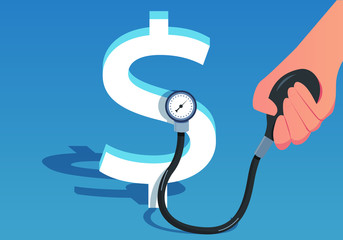As we conclude this series about the financial well-being of rural and critical access hospitals, Dr. Budman examines how one organization – Magnolia Regional Health Center in Mississippi – invested in a robust clinical documentation improvement (CDI) program. The results: expanded case coverage, improved CMI and quality ratings, and a significant improvement in appropriate reimbursements.
This post was previously posted on Healthcare IT News on October 11, 2019. Republished with permission.
I’ve been writing recently about the financial well-being of rural and critical access hospitals: about their struggling to stay in business, and how establishing a clinical documentation improvement (CDI) program can help keep the doors open. The reasons for my interest are simple. As a practicing physician, I care deeply about ensuring that we all have access to the care that we need. Rural health facilities provide vital health services and economic opportunities for large swaths of people across the country. And so, as we conclude this series, I want to share with you a real-world example of a rural health facility that established a CDI program and what they were able to achieve as a result.
Magnolia Regional Health Center (MRHC) is a 200-bed acute care community hospital located in Corinth, Mississippi. The hospital wanted to support its physicians with AI-powered speech recognition to make it easier to navigate and create comprehensive documentation within the electronic health record (EHR). Upon implementing Dragon Medical One, their chosen speech recognition solution, MRHC “rapidly and overwhelmingly” embraced it, saying they not only found the platform easy to use, it also improved the quality of patient documentation.
Because of the success of speech recognition, MRHC expanded its investments in AI-driven tools to support their CDI program, which was designed to improve the quality of documentation further and more accurately reflect patient acuity and the level of care provided.
Although quality metrics are essential, “Doctors aren’t driven by case mix index. They’re driven by quality outcomes and patient outcomes – taking care of the patient as a whole,” said Jill Tays, BSN, MRHC’s Director of Case Management. But today, armed with Nuance CDI technology, MRHC’s team has been able to prioritize the more complex cases that offer the most opportunity for improvement, making the entire CDI process more efficient and effective.
Not only has MRHC been able to cover more cases and expand payer coverage, they’ve also improved case mix index and other quality scores. Tays attributes providers’ ability to spend more time with patients at the bedside to the AI-powered documentation solutions. Together, all of the efforts at MRHC have contributed to an improvement of more than $4 million in appropriate reimbursements.
In my mind, there’s no question that CDI programs can have a tremendous, positive impact on rural hospitals across the U.S., and I believe that MRHC’s successful program can serve as a roadmap for many rural healthcare organizations. Just imagine for a moment the impact of an additional $4 million on your organization – what could you do to help advance the health and well-being of your community?
This blog post is the third in a three-part series. To view the first blog post, click here, or second blog post, click here.







